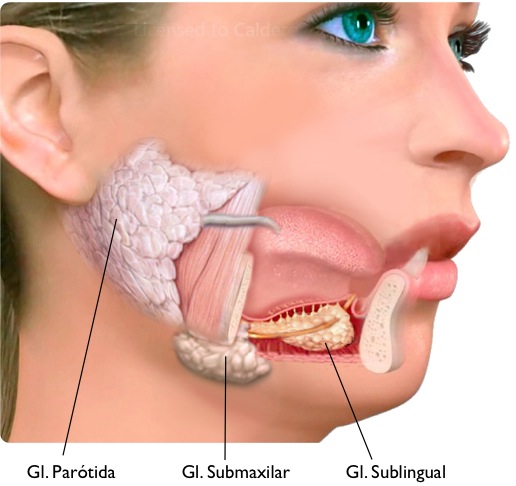
Las glándulas salivares son las encargadas de producir la saliva, que tiene una función fundamental en la humidificación de la cavidad oral y la ingestión y digestión de los alimentos.
Las podemos dividir en glándulas salivales mayores, (Parótida, Submaxilar y Sublingual), de las cuales a hay dos de cada, una a cada lado, y menores (cientos, repartidas por toda la boca).
La cantidad de saliva que se produce al día es de aproximadamente 1,5 litros (90% en la parótida y submaxilar, 5% en la sublingual y el resto en las glándulas menores).
Las enfermedades que afectan a las glándulas salivales son muy variadas y su tratamiento estará en función de la causa que la produzca.
Las podemos dividir en:
Los más frecuentes son benignos y aparecen en la glándula parótida. Para el diagnóstico necesitamos técnicas de imagen (TAC, RNM…) y una biopsia por punción.
El tratamiento consiste generalmente en la extirpación quirúrgica a través de abordajes estéticos que minimicen las cicatrices.
Pueden ocurrir de manera puntual (agudos) o repetirse cada vez con mayor frecuencia (crónicos).
Su tratamiento generalmente es médico, y con menor frecuencia se requiere un tratamiento quirúrgico de extracción del cálculo y de la glándula.
Enfermedades inmunológicas, víricas, bacterianas… que requieren un tratamiento médico.
PAGINA EN CONSTRUCCION
Hay dos tipos de glándulas salivales: Mayores y Menores.
The Parotid gland is located in a very crucial location on the side of the face. The facial nerve (the nerve that controls the movement of facial musculature thus giving us our facial expressions) pierces the gland from behind, just underneath the ear; it travels through the whole gland, thus dividing the gland into the superficial and deep lobes, and then enters the face and its muscles.
Any surgery on this gland must consider this intricate anatomy and protect it. There are also several lymph nodes within the Parotid gland itself that may give rise to tumors such as lymphoma or can be destination for cancers spreading from other areas. (for example, skin of scalp).
The submandibular gland produces more saliva than the other glands; it sits just deep to the jaw at the midpoint between the chin and the angle of the jaw. Several important nerves are located in close proximity of the gland, including: (1) the marginal mandibular nerve that moves the lower lip (2) the hypoglossal nerve that moves half the tongue (3) the lingual nerve that is in charge of taste and sensation of the tongue. The surgical anatomy of these nerves are very complex but quite consistent in expert hands. There are also several lymph nodes around this gland that, at times, may be involved with tumors and will need to be removed.